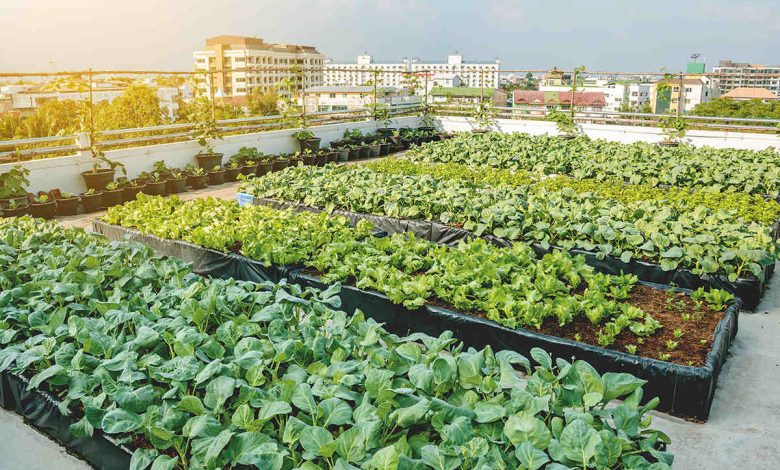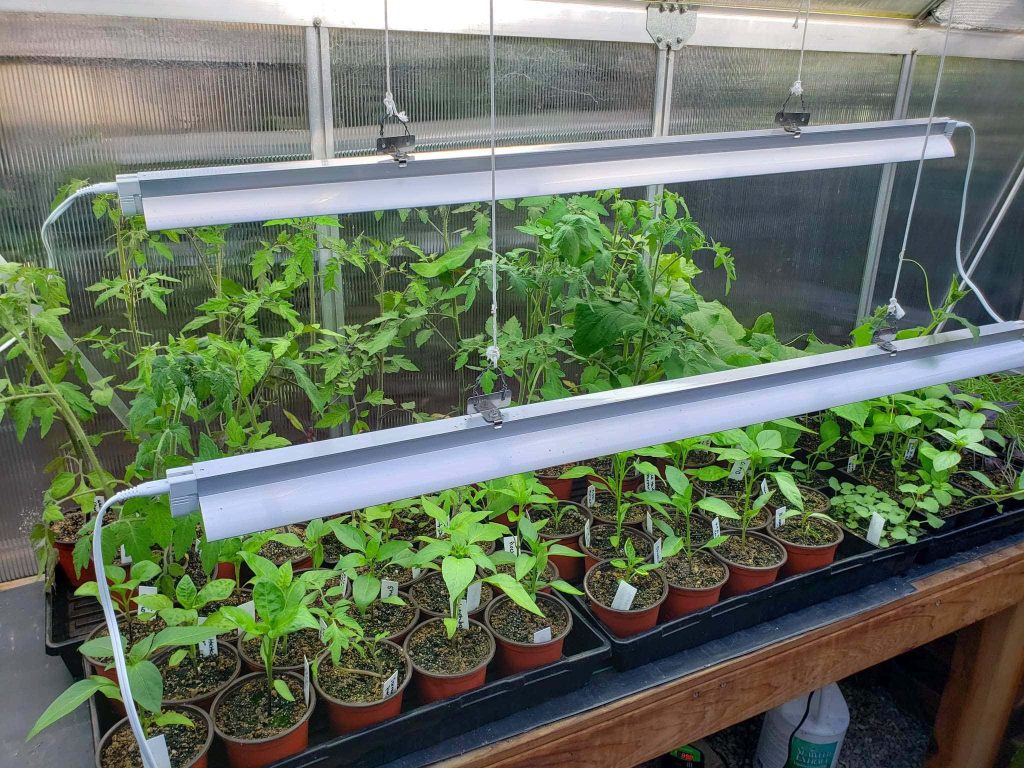The Growing Popularity of Urban Gardening

The growing popularity of urban gardening is reshaping how people in cities connect with nature, food, and their communities. As urban populations rise and green spaces shrink, more city dwellers are turning balconies, rooftops, and vacant lots into vibrant gardens. This detailed guide explores why urban gardening is booming, its benefits, challenges, and practical tips
Introduction: The Growing Popularity of Urban Gardening
Urban gardening is more than a hobby—it’s a movement. It helps people grow their own food, improve mental health, build community, and fight climate change. Whether you have a small balcony or access to a community plot, urban gardening offers a way to bring green life into concrete cities.
What Is Urban Gardening?
Urban gardening means growing plants—vegetables, fruits, herbs, flowers—in city environments. It can be done in:
- Containers on balconies or windowsills
- Rooftop gardens
- Community gardens in vacant lots
- Vertical gardens on walls or fences
- Indoor gardens with grow lights

Key Features of Urban Gardening
- Space-saving: Uses small or unconventional spaces.
- Sustainability: Often uses organic methods and recycles materials.
- Community-focused: Many urban gardens are shared and collaborative.
- Educational: Teaches city residents about food, nature, and ecology.
- Accessible: Can be done by anyone, regardless of gardening experience.
Why Is Urban Gardening Becoming Popular?
The Growing Popularity of Urban Gardening: Main Drivers
- Food security: Growing your own food reduces dependency on supply chains.
- Climate action: Plants help reduce urban heat, absorb CO2, and support biodiversity.
- Social connection: Gardens build community and reduce loneliness.
- Economic savings: Homegrown food cuts grocery bills.
- Aesthetic improvement: Gardens beautify neighborhoods and increase property values.
- Health and wellness: Gardening improves diet, exercise, and mental health.

Types of Urban Gardens
The Growing Popularity of Urban Gardening: Garden Styles
- Container gardening: Plants grown in pots or boxes on balconies or patios.
- Rooftop gardening: Utilizing flat roofs for larger gardens.
- Community gardens: Shared plots managed by neighborhood groups.
- Vertical gardening: Growing plants up walls or trellises to save space.
- Hydroponics and aquaponics: Soil-free growing systems ideal for indoors or small spaces.
- Indoor gardening: Using pots, shelves, or grow lights inside homes.
Benefits of Urban Gardening
- Improves air quality: Plants filter pollutants and produce oxygen.
- Supports mental health: Gardening reduces stress and improves mood.
- Enhances nutrition: Fresh, organic produce is healthier.
- Promotes physical activity: Gardening is moderate exercise.
- Encourages sustainability: Reduces food miles and packaging waste.
- Fosters education: Teaches children and adults about ecology and responsibility.
Challenges and Solutions
The Growing Popularity of Urban Gardening: Overcoming Obstacles
| Challenge | Solution |
|---|---|
| Limited space | Use vertical gardens, containers |
| Poor soil quality | Use raised beds, soil mixes, or hydroponics |
| Pollution and pests | Choose resistant plants, organic pest control |
| Water access | Collect rainwater, use drip irrigation |
| Time constraints | Choose low-maintenance plants |
| Lack of knowledge | Join gardening groups, use online resources |
Urban Gardening vs Traditional Gardening Table
| Feature | Urban Gardening | Traditional Gardening |
|---|---|---|
| Space | Limited, small or vertical | Large, open ground |
| Soil | Often poor or artificial | Natural, rich soil |
| Water | May be limited, requires planning | Usually abundant |
| Community | Often shared or communal | Usually private |
| Accessibility | Easy for city residents | Requires land or rural access |
| Environmental Impact | Reduces food miles, urban heat | Can involve large-scale farming |
| Crop Variety | Limited by space and conditions | Wide variety possible |

The Economic and Social Impact of Urban Gardening
The Growing Popularity of Urban Gardening—Economic and Community Benefits
Boosting Local Economies
- Job creation: Urban farms and community gardens provide employment for city residents, from garden managers to educators.
- Entrepreneurship: Small businesses sell seedlings, compost, gardening tools, and fresh produce at local markets.
- Savings: Households save money by growing herbs, vegetables, and fruit at home, reducing grocery bills.
Strengthening Communities
- Community engagement: Shared gardens bring neighbors together, fostering trust and cooperation.
- Food justice: Urban gardening projects often target food deserts, improving access to fresh produce in underserved neighborhoods.
- Cultural exchange: Gardens become spaces for sharing traditional crops, recipes, and gardening techniques, especially in multicultural cities.
“Urban gardens are more than green spaces—they’re engines for economic growth and social change.”
— Lucia Ramirez, Community Gardening Advocate
Urban Gardening and Sustainability
The Growing Popularity of Urban Gardening—Environmental Impact
Climate Action
- Urban cooling: Plants reduce the urban heat island effect, making cities cooler and more livable.
- Carbon capture: Gardens absorb CO₂ and other pollutants, improving air quality.
- Stormwater management: Green roofs and rain gardens absorb rainwater, reducing flooding and runoff.

Biodiversity
- Pollinator support: Urban gardens attract bees, butterflies, and birds, supporting local ecosystems.
- Native plants: Many projects focus on indigenous species, preserving local biodiversity.
Visual: Urban Gardening Sustainability Table
| Sustainability Benefit | Urban Gardening Action | Example Impact |
|---|---|---|
| Urban cooling | Green roofs, tree planting | Lower city temperatures |
| Air purification | Dense plantings, vertical gardens | Cleaner air, less smog |
| Water management | Rain gardens, permeable soil | Reduced flooding |
| Biodiversity | Pollinator-friendly flowers | More bees and butterflies |
Urban Gardening in South America: Regional Focus
The Growing Popularity of Urban Gardening—South American Trends
- Buenos Aires: Community gardens in vacant lots help low-income families grow food and teach children about nutrition.
- São Paulo: Vertical gardens on high-rise buildings improve air quality and provide fresh vegetables for residents.
- Bogotá: Rooftop gardens in schools supply cafeterias and serve as outdoor classrooms.
- Lima: Hydroponic systems in urban slums provide affordable, pesticide-free produce
Urban Gardening and Public Policy: How Cities Are Supporting Green Growth
The Growing Popularity of Urban Gardening—Policy and Urban Planning
City Initiatives and Incentives
- Land access: Many cities now offer unused public land or rooftops for community gardens.
- Grants and subsidies: Local governments provide funding for tools, seeds, and infrastructure.
- Zoning changes: Urban planners are updating codes to allow gardens in residential, commercial, and even industrial zones.
- Education programs: Municipalities partner with NGOs to offer workshops on composting, water conservation, and organic growing.
Visual: Urban Gardening Policy Table
| City | Support Offered | Impact |
|---|---|---|
| New York | Community garden leases, grants | 600+ gardens, improved food access |
| Lagos | School gardening programs | Youth engagement, nutrition |
| London | Allotment expansion, compost bins | More green space, waste reduction |
| São Paulo | Rooftop farming incentives | Cooler buildings, local jobs |
Urban Gardening and Health: Physical, Mental, and Social Benefits
The Growing Popularity of Urban Gardening—Health and Well-being
Physical Health
- Nutrition: Access to fresh, organic produce improves diets and reduces reliance on processed foods.
- Exercise: Gardening activities—digging, planting, watering—provide regular, moderate exercise.
- Air quality: Plants filter pollutants, reducing asthma and respiratory issues in dense cities.
Mental Health
- Stress relief: Gardening is proven to lower cortisol (stress hormone) and boost mood.
- Mindfulness: Tending to plants encourages presence and relaxation.
- Therapeutic value: Urban gardens are used in therapy for PTSD, depression, and anxiety.
Social Health
- Community bonds: Shared spaces foster friendships and reduce loneliness.
- Intergenerational learning: Elders teach youth, sharing skills and stories.
- Cultural pride: Immigrant communities grow traditional crops, preserving heritage.
“Urban gardening is medicine for the body, mind, and soul—especially in the fast pace of city life.”
— Dr. Aisha Bello, Urban Health Specialist
Technology and Urban Gardening: Smart Solutions for the City
The Growing Popularity of Urban Gardening—Tech Tools
Smart Gardening Devices
- Soil sensors: Monitor moisture, nutrients, and pH, sending alerts to your phone.
- Automated watering: Timers and drip systems save water and time.
- LED grow lights: Enable indoor gardening in apartments with little sunlight.
Apps and Online Platforms
- Plant care apps: Track watering, fertilizing, and pest control schedules.
- Community forums: Share tips, swap seeds, and organize events.
- Mapping tools: Locate nearby gardens, compost sites, and urban farms.
Visual: Urban Gardening Tech Table
| Tool/Platform | Benefit | Example Use |
|---|---|---|
| Soil sensor | Prevents over/underwatering | Alerts when plants need water |
| App (e.g., GrowIt) | Step-by-step care instructions | Reminders for busy gardeners |
| LED grow lights | Year-round indoor harvests | Fresh herbs in winter |
| Community map | Connects gardeners, shares space | Find local compost drop-off |
Urban Gardening for Education and Youth Empowerment
The Growing Popularity of Urban Gardening—Learning and Leadership
School Gardens
- STEM learning: Kids learn biology, chemistry, and math through hands-on gardening.
- Nutrition education: Students grow and taste healthy foods, changing eating habits.
- Leadership: Youth manage plots, plan crops, and lead workshops.
Youth Programs
- Job training: Teens gain skills in horticulture, teamwork, and entrepreneurship.
- Community service: Youth-led gardens beautify neighborhoods and support food banks.
Visual: Urban Gardening Education Table
| Program Type | Key Benefit | Example Activity |
|---|---|---|
| School garden | Hands-on science learning | Grow vegetables, measure growth |
| Teen program | Job and leadership skills | Sell produce at local market |
| After-school club | Social and emotional support | Group gardening, art projects |
Urban Gardening and Climate Resilience
The Growing Popularity of Urban Gardening—Adapting to Climate Change
- Heat mitigation: Green roofs and walls cool buildings, reducing energy use.
- Flood prevention: Rain gardens and permeable beds absorb stormwater.
- Food system resilience: Local gardens buffer against supply chain disruptions.
“As climate risks rise, urban gardens are a frontline defense for cities—cooling, feeding, and connecting people.”
— Samuel Okoro, Environmental Planner
More Actionable Tips for Urban Gardeners
- Start a seed library: Share seeds with neighbors to boost biodiversity.
- Host a garden open day: Invite the community to learn and get involved.
- Document your progress: Use photos and journals to track growth and share success.
- Advocate for green policy: Support local efforts for more public gardening space.
- Experiment with new crops: Try drought-tolerant or native species for resilience.
Looking Ahead: Urban Gardening’s Future
- Integration in city planning: Expect more gardens in new developments, rooftops, and public spaces.
- Corporate and hospital gardens: Workplaces and healthcare centers use gardens for wellness and food.
- Global movement: Urban gardening is connecting cities worldwide, sharing solutions for greener, healthier living.
Case Studies: Real Urban Gardeners
Case Study 1: The Rooftop Farm in New York
A group transformed a rooftop into a thriving vegetable garden, supplying local restaurants and educating the community.
Case Study 2: The Balcony Herb Garden in Lagos
A young professional grows herbs and leafy greens on her apartment balcony, saving money and eating fresh.
Case Study 3: The Community Garden in Buenos Aires
Neighbors turned a vacant lot into a shared garden, improving local food access and social ties.
Case Study 4: The Vertical Garden Startup in São Paulo
A startup creates vertical garden kits for small apartments, combining technology with sustainability.
Case Study 5: The Hydroponic Farm in Mexico City
An urban farm uses hydroponics to grow lettuce and tomatoes year-round, reducing water use and land needs.
Case Study 6: The School Garden in Cape Town
Students learn biology and nutrition by growing vegetables in a school garden, improving health and engagement.
Case Study 7: The Indoor Gardeners in Tokyo
Apartment dwellers use grow lights and smart sensors to maintain fresh herbs and vegetables indoors.
Case Study 8: The Elderly Gardeners in Paris
A community center offers gardening classes and plots for seniors, promoting social interaction and physical activity.
Pros and Cons Table
| Pros of Urban Gardening | Cons of Urban Gardening |
|---|---|
| Fresh, local food | Limited space and crop variety |
| Builds community and social bonds | Pollution and pests |
| Improves mental and physical health | Requires time and effort |
| Reduces carbon footprint | Initial setup costs |
| Educational opportunities | Water and soil quality challenges |
| Beautifies urban spaces | Seasonal limitations |
Tips for Starting Your Own Urban Garden
- Start small: Use pots or window boxes if space is limited.
- Choose easy plants: Herbs, lettuce, and tomatoes are good starters.
- Use quality soil: Invest in good potting mix or raised bed soil.
- Water wisely: Use drip irrigation or self-watering containers.
- Learn and connect: Join local gardening groups or online forums.
- Plan for pests: Use natural pest control methods.
- Rotate crops: Avoid planting the same thing repeatedly to keep soil healthy.
- Use compost: Recycle kitchen scraps to enrich your soil.
- Be patient: Gardening is a learning process—expect some trial and error.
- Enjoy the process: Take time to appreciate your plants and the fresh air.
Frequently Asked Questions (FAQ)
1. What is urban gardening?
Growing plants in city environments, often in small or shared spaces.
2. Can I grow food on a balcony?
Yes, with containers, good soil, and proper care.
3. Is urban gardening expensive?
It can be affordable, especially if you start small and use recycled materials.
4. What plants grow best in urban gardens?
Herbs, leafy greens, tomatoes, peppers, and some root vegetables.
5. How do I deal with pests in the city?
Use natural methods like neem oil, companion planting, or physical barriers.
6. Can urban gardening help the environment?
Yes, it reduces food miles, improves air quality, and supports biodiversity.
7. Do I need a lot of sunlight?
Most vegetables need 6+ hours of sun; some herbs tolerate shade.
8. How much time does urban gardening take?
A few minutes daily for watering and care; more for harvesting and planting.
9. Can kids participate?
Yes, gardening is a great educational and fun activity for children.
10. Where can I get help or resources?
Local community gardens, online forums, gardening clubs, and libraries.
Conclusion
The growing popularity of urban gardening shows that city life and nature can coexist beautifully. With the right knowledge and tools, you can enjoy fresh food, better health, and stronger community ties—without giving up comfort or convenience. Start your urban garden today and join the movement transforming cities into greener, happier places.




